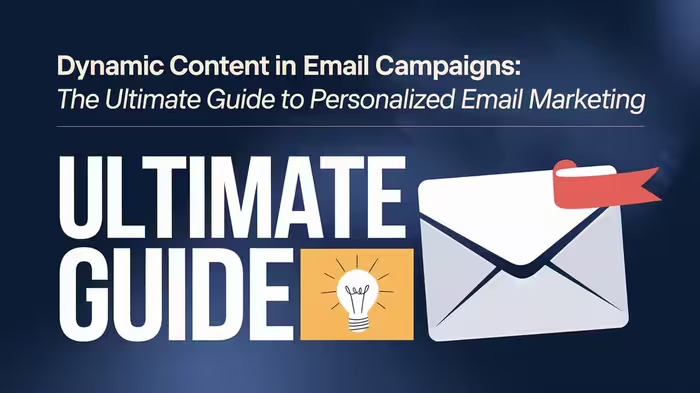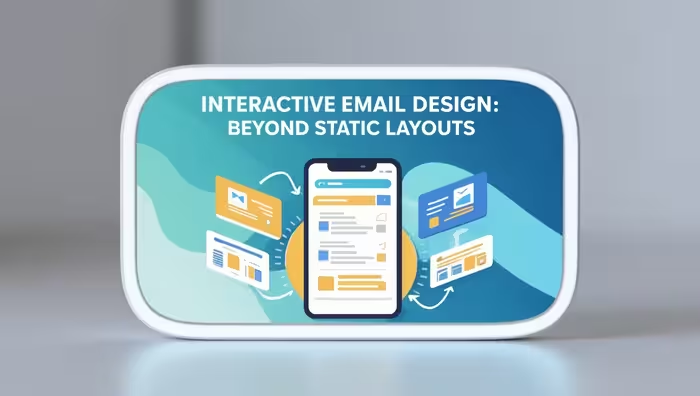Remember when email marketing meant sending the same message to everyone on your list? Those days are long gone! Today, we’re diving into the exciting world of dynamic content in email campaigns – a game-changer that’s revolutionizing how businesses connect with their customers.
Understanding Dynamic Content
What is Dynamic Content?
Think of dynamic content as a chameleon in your email marketing strategy. It’s content that automatically changes based on who’s reading your email. Just like how a chameleon changes its colors to match its environment, dynamic content adapts to match your reader’s preferences, behaviors, and needs.
Let’s break this down with a simple example: imagine sending an email about winter clothing. A customer in New York might see cozy winter coats, while someone in Florida gets lightweight jackets instead. That’s dynamic content in action!
Why Dynamic Content Matters
In today’s digital world, your customers expect personalized experiences. They don’t want to feel like just another name on your email list. Here’s what makes dynamic content so powerful:
- 74% of marketers say personalized emails increase customer engagement
- Personalized emails deliver 6x higher transaction rates
- Dynamic content can boost click-through rates by up to 300%
How Dynamic Content Works
The Technical Foundation
Behind every personalized email is a robust system of data collection and automation. Think of it as a smart kitchen that knows exactly what ingredients (data) to use for each customer’s perfect meal (email content).
Data Collection Methods
Your dynamic content is only as good as the data powering it. Here’s how you can gather valuable customer information:
- Website behavior tracking
- Purchase history analysis
- Survey responses
- Email interaction patterns
- Social media engagement
Implementation Process
Setting up dynamic content isn’t as complicated as you might think. Here’s a step-by-step approach:
- Collect and organize customer data
- Create customer segments
- Design content variations
- Set up automation rules
- Test and optimize
Elements of Dynamic Email Content
Personal Information
The basics of personalization include:
- Names
- Location
- Gender
- Age group
- Language preferences
But don’t stop there! Let’s look at more advanced elements.
Behavioral Data
Your customers’ actions tell a story. Use these behavioral triggers:
- Recent purchases
- Abandoned carts
- Browsing history
- Email engagement history
- Customer lifecycle stage
Contextual Content
Consider these contextual elements:
- Time of day
- Weather
- Local events
- Seasonal changes
- Current promotions
Implementation Strategies
Smart Segmentation
Think of segmentation as sorting your customers into different boxes, but these boxes have flexible walls. Your segments might include:
- New subscribers
- Active customers
- VIP customers
- At-risk customers
- Win-back opportunities
Content Creation Guidelines
When creating dynamic content:
- Keep it relevant
- Make it valuable
- Ensure seamless transitions
- Maintain brand consistency
- Test different variations
Best Practices for Dynamic Email Content
Data Management
Good data hygiene is crucial:
- Regular database cleaning
- Permission management
- Data security measures
- Update frequency planning
- Backup procedures
Design Considerations
Your dynamic content should:
- Load quickly
- Look great on all devices
- Have fallback options
- Maintain brand consistency
- Be easily scannable
Common Challenges and Solutions
Challenge 1: Data Quality
Solution: Implement regular data cleaning processes and validation systems.
Challenge 2: Technical Integration
Solution: Start small and gradually expand your dynamic content implementation.
Challenge 3: Content Management
Solution: Create a content matrix to organize variations effectively.
Success Stories and Examples
Let’s look at some real-world wins:
- An e-commerce company increased sales by 150% using location-based product recommendations
- A travel agency boosted click-rates by 73% with weather-based travel suggestions
- A retail chain saw 25% higher conversion rates using purchase history-based recommendations
Future Trends in Dynamic Email Content
Keep an eye on these emerging trends:
- AI-powered content generation
- Advanced predictive analytics
- Real-time content optimization
- Interactive email elements
- Enhanced privacy features
Conclusion
Dynamic content isn’t just the future of email marketing – it’s the present. By personalizing your email campaigns, you’re not just sending messages; you’re creating conversations that resonate with each reader. Start small, test often, and watch your engagement soar!
Frequently Asked Questions
1. How much does it cost to implement dynamic content in email campaigns?
The cost varies widely depending on your email service provider and the complexity of your implementation. Basic dynamic content features are often included in standard email marketing platforms, while more advanced features might require premium subscriptions ranging from $50 to $500+ monthly.
2. Can small businesses benefit from dynamic content?
Absolutely! Even simple dynamic content like name personalization and basic segmentation can significantly improve email performance. Start with the basics and expand as your business grows.
3. How long does it take to set up dynamic content?
Basic dynamic content can be implemented in a few days, but more complex systems might take several weeks to set up properly, including data collection and testing phases.
4. What’s the minimum subscriber list size needed for dynamic content?
There’s no minimum size – even small lists can benefit from personalization. However, for more advanced segmentation, a larger list (500+ subscribers) provides better insights and testing opportunities.
5. How can I measure the success of my dynamic content?
Track key metrics like open rates, click-through rates, conversion rates, and revenue per email. Compare these metrics between your dynamic and static content campaigns to measure improvement.


